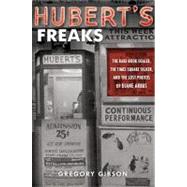
| Preface: The Man in Blue | p. 1 |
| An American Palindrome | |
| Sunday, Monday, and Charlie | p. 7 |
| The Old Roman Gardens | p. 12 |
| Deeyan and Allan | p. 17 |
| What More can You ask for? | p. 22 |
| Early Bob | p. 32 |
| Life in the Colonies | p. 40 |
| Bob: The Middle Years | p. 43 |
| Simoom in the Sahara | p. 47 |
| Diane and John | p. 53 |
| Jan, Meg, Ernie, and Mom | p. 59 |
| Miss McRae | p. 64 |
| The Final Act | p. 67 |
| Black History | p. 71 |
| The Collectors | p. 75 |
| Out of Africa | p. 81 |
| Feeding the Rat | p. 87 |
| The Buy | p. 92 |
| The Finer Sort | p. 98 |
| Flying Fur | p. 104 |
| Down the Rabbit Hole | p. 110 |
| The Grind | p. 118 |
| A Crack in the Mystical Vessel | p. 129 |
| Bob and Woogie | p. 134 |
| Deconstructing the Palindrome | p. 138 |
| New Bob | |
| The Kiss and the Curse | p. 145 |
| Paper Pajamas | p. 151 |
| Off the Couch and into the Frying Pan | p. 156 |
| Yes!!! Fantastic!!! and Fascinating!!! | p. 162 |
| Robert Miller | p. 168 |
| A Shark's Lunch | p. 174 |
| Consummatum Est | p. 185 |
| The Magic Cloud | p. 191 |
| Bob and Steve | p. 196 |
| Other Faces | p. 202 |
| Woogie's Boxes | p. 207 |
| The Old, Weird Bob | p. 222 |
| The Bostocks of West Philadelphia | p. 231 |
| Deep Leo | p. 233 |
| In Which Bob Proves to Have Been More Stubborn than Jan was Angry | p. 236 |
| Heisenberg Jr | p. 241 |
| Untitled | p. 246 |
| Healing Waters | p. 254 |
| The Sunset Kid | p. 257 |
| And That's not all | p. 262 |
| Acknowledgments | p. 265 |
| Selected Bibliography | p. 267 |
| Table of Contents provided by Ingram. All Rights Reserved. |
The New copy of this book will include any supplemental materials advertised. Please check the title of the book to determine if it should include any access cards, study guides, lab manuals, CDs, etc.
The Used, Rental and eBook copies of this book are not guaranteed to include any supplemental materials. Typically, only the book itself is included. This is true even if the title states it includes any access cards, study guides, lab manuals, CDs, etc.
Excerpted from Hubert's Freaks: The Rare-Book Dealer, the Times Square Talker, and the Lost Photos of Diane Arbus by Gregory Gibson
All rights reserved by the original copyright owners. Excerpts are provided for display purposes only and may not be reproduced, reprinted or distributed without the written permission of the publisher.